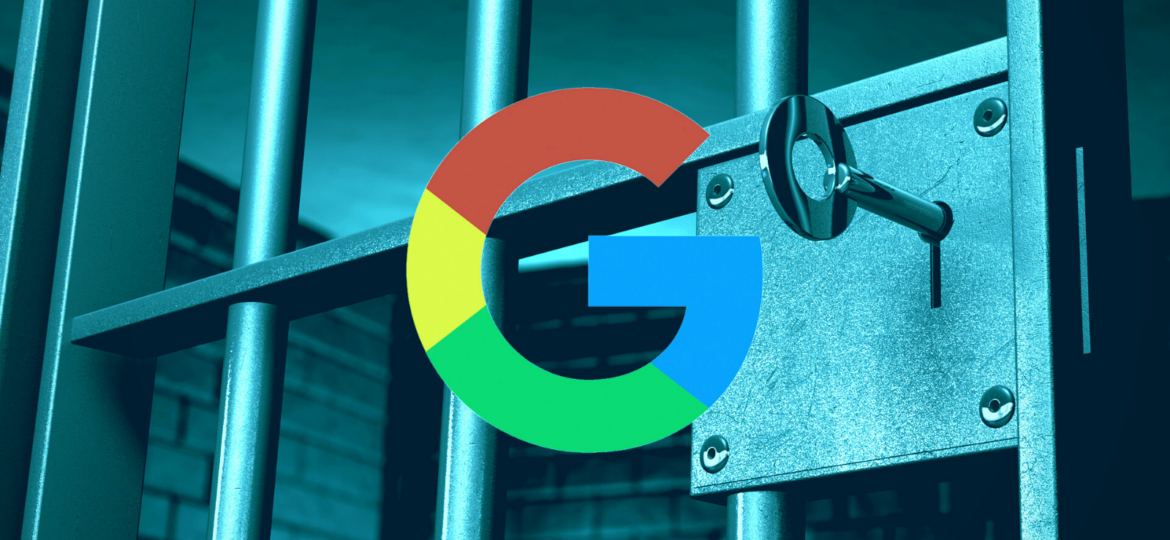
Last Updated on November 4, 2022 by anytimedigital
Google is constantly changing its search engine algorithms, and one of the ways it does this is by issuing website penalties. A penalty can be a slap on the wrist, such as a lower ranking or being removed from Google’s search results altogether. However, sometimes penalties are more severe, such as being banned from Google altogether. In this article, we’ll list 10 of the most common Google website penalties that can hurt your SEO.
1. Panda Penalty
Low-quality content can lead to a Google Panda penalty. This is an algorithm designed by the search engine giant which targets thin or poorly written websites and lowers their ranking in SERPs (search Engine Results Pages). If you have too little pages on your site, or if those are not very informative then this could affect visibility for people who want what they’re looking for online – potentially hurting their business endeavors as well!
Google’s quest to eliminate black hat SEO tactics and web spam started with their new algorithm, Panda. They first launched it in February 2011 as part of this quest for on-page cleanliness. However, at that time user complaints about the increasing influence content farms had grown rampant. Therefore, along came Google’s answer with its machine learning model incorporating human ratings which was incorporated into ranking factor. Currently, it is firmly embedded within these algorithms so updates won’t be seen separately but rather together making them stronger than ever before.
2. Penguin Penalty
Penguin is a penalty that’s designed to target websites who engage in spammy or black hat SEO tactics. However, if your site has been caught using any of these techniques, you may be hit with an earning from Google called “Penguingo.” This can lower the ranking and visibility for search results on google which could lead people not find what they’re looking for when browsing.
Google’s war on low-quality started with the Panda algorithm, and Penguin was an extension to this arsenal. The increasing practice of manipulating search results through black hat link building techniques led them into developing this penalty. It was a way for websites that were earning natural links (and thus ranking higher) to receive more authority than those who weren’t. Meanwhile, spammy or manipulative ones could be downgraded in rank by it’s anti-“Penguin” process.
3. Hummingbird Penalty
The Google Hummingbird penalty is a penalty that’s specifically designed to target websites that engage in keyword stuffing. If your website is stuffed with keywords, you may be hit with a Hummingbird penalty. This penalty can lower your website’s ranking and visibility in Google’s search results.
The Hummingbird update is designed to better understand what people are looking for based on their intent, not just keywords. Therefore, you need choose your words carefully. And, make sure that Google knows exactly where the site fits into its algorithms through optimized SEO practices. For instance, completing tasks related with web crawlers’ map/indexing information or labeling pages correctly. This will help achieve higher rankings than competitors who didn’t take these steps.
4. Google Pigeon
The Google Pigeon is not really a penalty. However, it’s specifically designed to target local businesses. If your website is targeting a local audience, you may be hit with a Pigeon update. This penalty can lower your website’s ranking and visibility in Google’s local search results if not done properly. This update offered better local search results by rewarding businesses with a strong organic presence. Therefore, Google hopes that people can find what they need locally without having any trouble finding it on the internet since there are no more penalties for not being ranked well.
5. The Mobile Penalty
-
Completely cover the content on a page. (These may appear after clicking through to a site from a SERP or while a user is in the process of reading/viewing/scrolling through a page.)
-
Push the content below the fold.
6. Exact Matching Domains
The Google EMD penalty is a ranking system that can lower your site’s visibility in search results. The intent behind this update was not to target exactly matching domain names exclusively. However, it will affect sites with spammy tactics such as those who use exact match domains and low quality websites. Therefore, providing an incentive for people looking online while performing these types of searches and making their webpages more easily accessible.
7. The Sandbox
The Sandbox is a filter that has been placed on new sites by the search engine giant. It’s not really an imposed penalty. However, it appears as you’re indexing your content with too many backlinks or over-optimized for keywords in one day when all of this goes live. The effects of this is temporary. For example, the first couple months will have significant negative impacts upon rankings. However, after 3+ quarter length terms (or roughly 18 days), things should smoothen out quite nicely.
8. Over optimization
Wherever there is an opportunity for optimization, you should always be looking to improve your site’s performance and rank in Google. However, over doing your site with keywords or content could seem like you’re seeking rank advantages. Therefore, this may result in penalties such as being labeled “over-optimized”. These types of violations can lead not only towards lowered visibility. In addition, it could bring potential money losses because fewer people will visit those pages when they’re blocked.
Google’s Matt Cuffs stated that the purpose of this is to “level the playing field”. As a result, giving sites that have great content a better shot at ranking above sites that have content that is not as great but do a better job with SEO.
9. Duplicate content
The Google duplicate content is not a penalty in itself. However, it is designed to target websites that have a lot of identical articles, photos or videos. It is considered as part of your website’s technical SEO. If your website has too much similar material, it could land you on the receiving end of an expensive search engine fine from Google. This is because they consider this as plagiarism which damages their ranking algorithms. In addition, duplicating content may de-index your site for certain pages depending how severe the case may be.
10. Google Manual Action Penalties
So what are manual penalties, and how do they differ from automated ones? Manual penalties come courtesy of Google’s human reviewers who rank sites that aren’t in compliance with their guidelines. Traditionally, this results in pages or sites being ranked lower for search engine purposes. However, it doesn’t have anything to do with algorithm changes such as Penguin (Google Hummingbird), Panda & others. Instead these actions happen simply because one website did something spammy enough by violating certain rules set out with Google.
Instead of fighting a manual action, it may be worth just deleting the page. The impact on your website’s organic search traffic and rankings as a whole will not significantly change. There are 2 types of manual actions regarding unnatural links to your site. The first type is where Google acknowledge that these nonhuman links don’t affect site rankings. They do suggest you try removing those linkable things from the webpages themselves or using redirects so they can’t be used for ranking purposes anymore. The second type involves shady schemes like spamming other sites with copied content just because someone wants higher ranks than their own. As a result, this will cause extensive damage across all pages on an entire domain if not stopped quickly enough.
Conclusion

